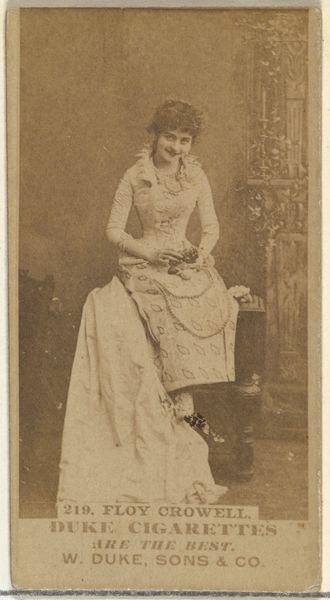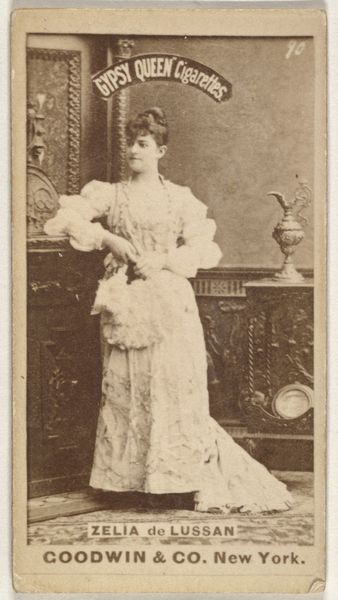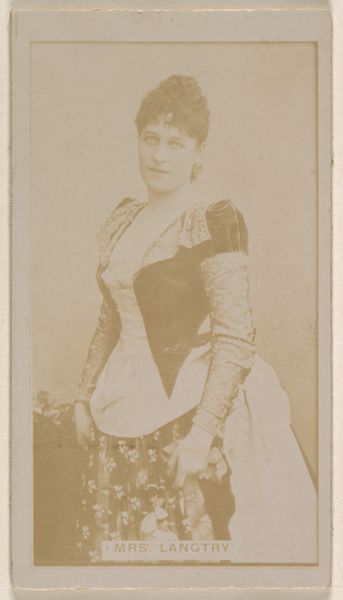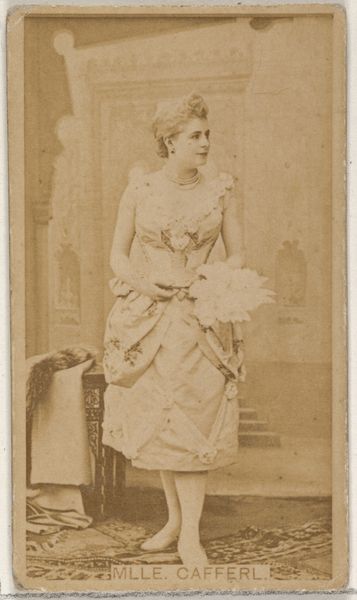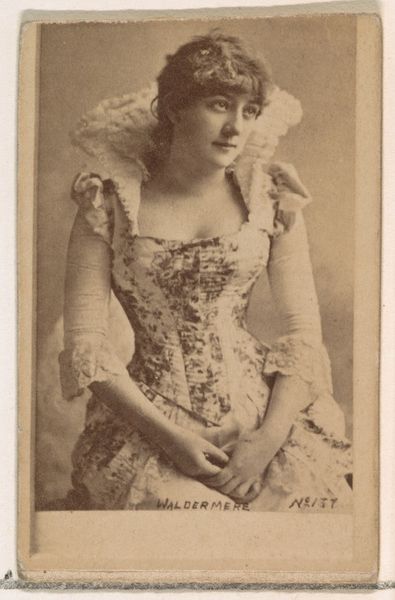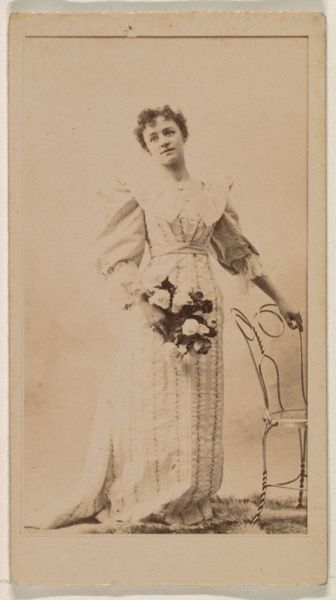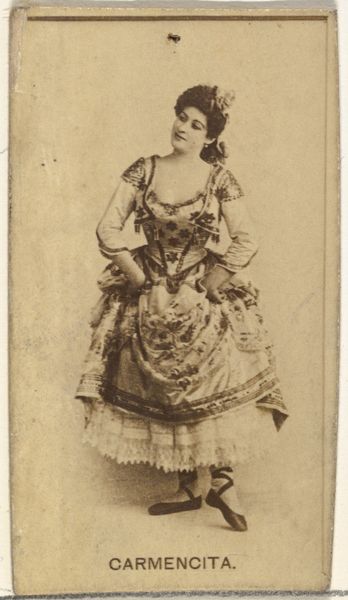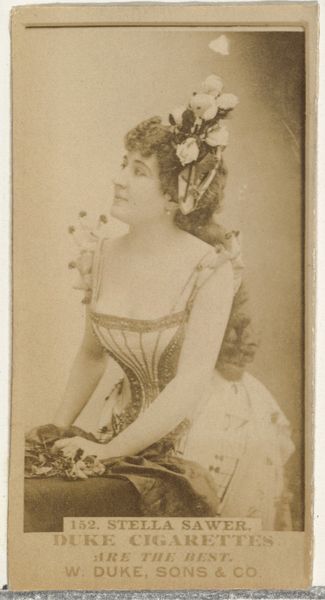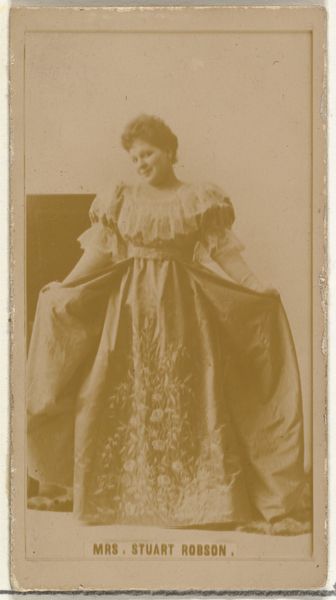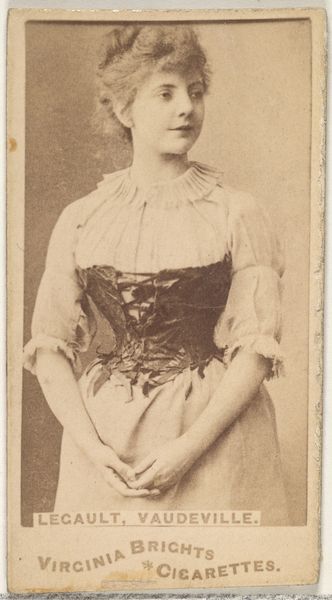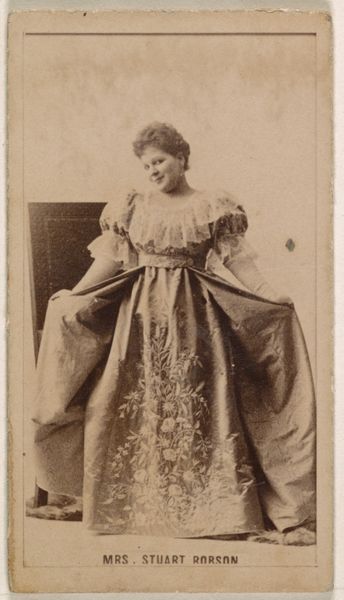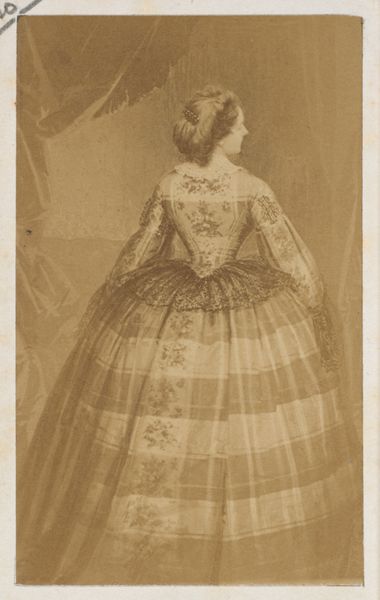
Card Number 305, M. Ricotti, from the Actors and Actresses series (N145-5) issued by Duke Sons & Co. to promote Cameo Cigarettes 1880s
0:00
0:00
drawing, print, photography
#
portrait
#
drawing
# print
#
photography
#
historical fashion
#
19th century
Dimensions: Sheet: 2 11/16 × 1 3/8 in. (6.8 × 3.5 cm)
Copyright: Public Domain
Curator: Immediately, I’m struck by the texture of the photograph—that rich, sepia tone. Editor: And a rather coy pose! This is "Card Number 305, M. Ricotti" from the "Actors and Actresses" series by W. Duke, Sons & Co., likely produced in the 1880s. Duke was, of course, promoting Cameo Cigarettes. Curator: Cigarettes? So, mass production on the one hand, theatrical elegance on the other... fascinating juxtaposition. It speaks to a moment where celebrity culture and consumerism were really beginning to intertwine, especially concerning the evolving roles for women on stage. Editor: Precisely! Let's consider the card's materiality—photographic print as trade card—distributed en masse. It democratizes access, albeit in a very limited, commercial way, to imagery of performing artists, like M. Ricotti, presumably. Who made the paper, mixed the chemicals, ran the printing press? What was their place in society? Curator: Indeed. Ricotti, in her theatrical garb, becomes a vessel for advertising. I'm drawn to the subtle yet assertive nature of her gaze. She appears costumed in garments which seem like a reimagined, romanticized view of the renaissance. Editor: And it’s fascinating to think about how many of these cards would have been handled, traded, and consumed—quite literally consumed by smokers—linking high culture to the mundane. Think about the labor involved to produce it and then to put her there, literally objectifying Ricotti for commerce. Curator: Looking closely, there is a real intentionality in how her clothing, as a signifier of luxury, is visually offered to a growing consumer base. In our contemporary context, this object could ignite conversations on performativity, gender identity, and the complexities of labor under industrial capitalism. Editor: A potent little artifact indeed. Seeing it now allows me to imagine how art transforms alongside manufacturing to support economic and class disparities. Curator: This exercise in situating Ricotti at this complex historical node proves vital to my work on performativity and the image. Editor: Examining this artwork at its base level brings an undeniable clarity.
Comments
No comments
Be the first to comment and join the conversation on the ultimate creative platform.

